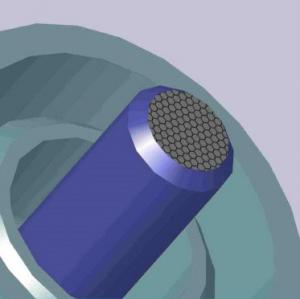Researchers from Cambridge (UK) and CNRS (France) have developed an ultra-fast mode-locked laser using Graphene. Graphene based lasers can be easier and cheaper to make than semiconductor saturable absorber mirrors (SESAMs) based lasers, and will be less limited in their bandwidth.
 Graphene ultra-fast laser
Graphene ultra-fast laser
The team studied how light is absorbed in graphene and how photo-excited charge carriers behave in the material. In particular, they highlighted the key role of "Pauli blocking" in saturating the light absorption. Because of the Pauli exclusion principle, when pumping of electrons in the excited state is quicker than the rate at which they relax, the absorption saturates. This is because no more electrons can be excited until there is "space" available for them in the excited state.
Since the Dirac electrons in graphene linearly disperse, this means that it is the most wideband saturable light absorber ever, far out-passing the bandwidth provided by any other known material.
The team is now in the process of optimizing a fully functioning wideband tunable laser based on graphene, as well as trying similar experiments with graphene oxide.

